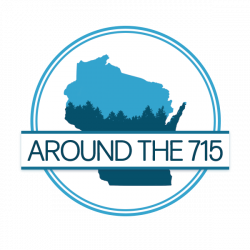What Is Clean Beauty?
Hey everyone, it's Meg Ann Lee and this week we are talking about "clean beauty". Well, sort of. I am not going to be giving you specific product recommendations. We are discussing what clean beauty is and what it isn't. Like the way a lot of brands use the terms "clean" or "chemical free" as a marketing strategy without delivering on their promises. If you get confused on what clean beauty means, this blog post is for you!

The clean beauty movement emerged as a response to concerns about the potential health risks associated with certain chemicals commonly found in cosmetics and personal care products. People are starting to realize what we put ON our bodies is just as important as what we put IN them.
But are we just getting duped?
What Is Clean Beauty?
Well that's the problem isn't it. No one knows. The google definition is "a product that is safe for people and the planet. Clean means that a beauty product should have considered human and environmental health, using a nontoxic element as a baseline and plant-based ingredients for active results.
Regulation
The regulation on the term "clean beauty" is pretty much nonexistent. If there is no standardized definition of what constitutes a product as "clean" then how would any organization be able to regulate it? This gap allows brands to use the term loosely, leading to confusion among consumers.
Fun fact, the FDA has only banned 11 additives in our cosmetic products while the European Union has banned or restricted over 1400. There hasn't been any significant change to American cosmetic regulation since 1938. Honestly, that's NUTS.
Greenwashing
Greenwashing might be a term you haven't heard. It is when a brand markets their products as clean or natural despite containing potentially harmful ingredients.
Without clear guidelines or third-party certification, it can be challenging for consumers to discern genuine clean products from those that are merely capitalizing on the trend. We see this a lot in how many brands are changing their colors and packaging to be perceived as more natural without changing their formulations.
So, what do we do?
Realize that "organic, "clean beauty" and "cruelty-free" don't always fall into the same category. Also, understand that a lot of products have "chemicals" in them that make the product effective. We have seen A TON of salons start marketing in an "organic" way, claiming they use ammonia free color. That's awesome. Unfortunately, for my grey coverage clients you need an active ingredient that acts like ammonia to cover grey hair. New color might not have "ammonia" but it has another synthetic chemical to make it work effectively.
You can scan products with apps. It's not fool proof but its a start!
If you are not really into checking ingredients but wish you could just BUY products that are safe, just know you're going to have to do some research on the "clean beauty" products that you think are safe.
If you are passionate about this topic and do not want to expose yourself to chemicals, don't use any! All of these extra things we do and buy are so unnecessary. Yes, they can be fun but you don't need them . Use the products with the least amount of ingredients or research making your own. Age naturally, BE NATURAL. It's beautiful. You do not need to cover your greys or put heavy fragranced lotion on everyday.
LOVE THE NATURAL YOU<3
